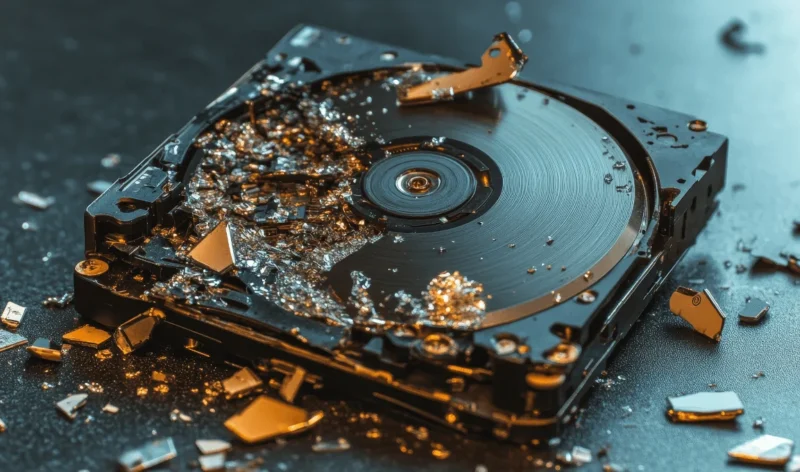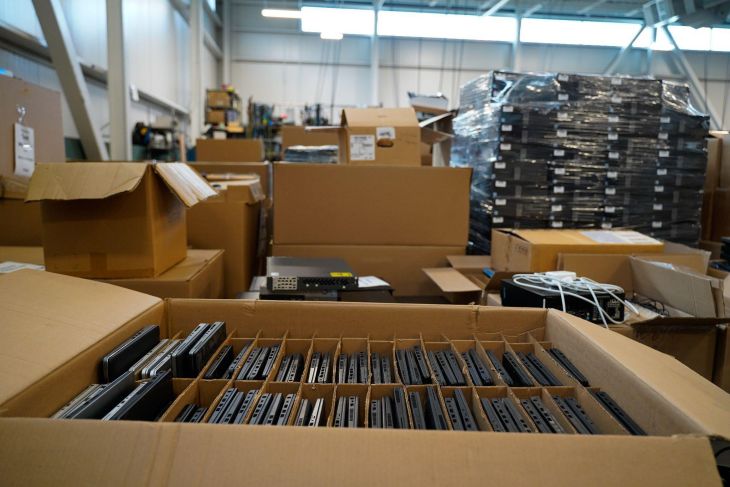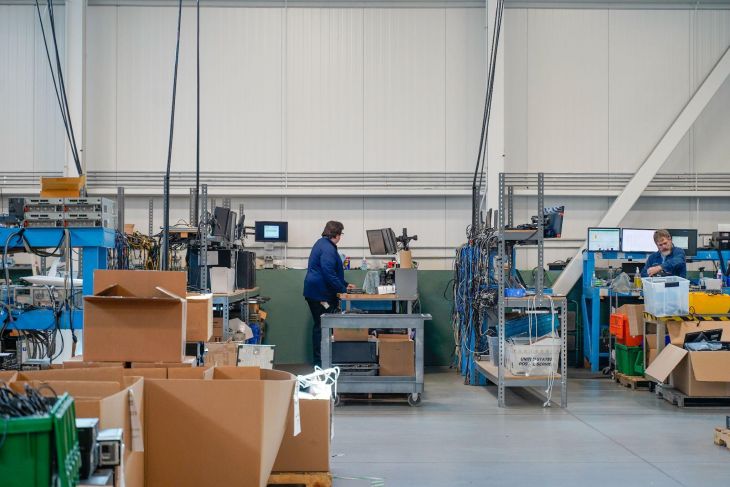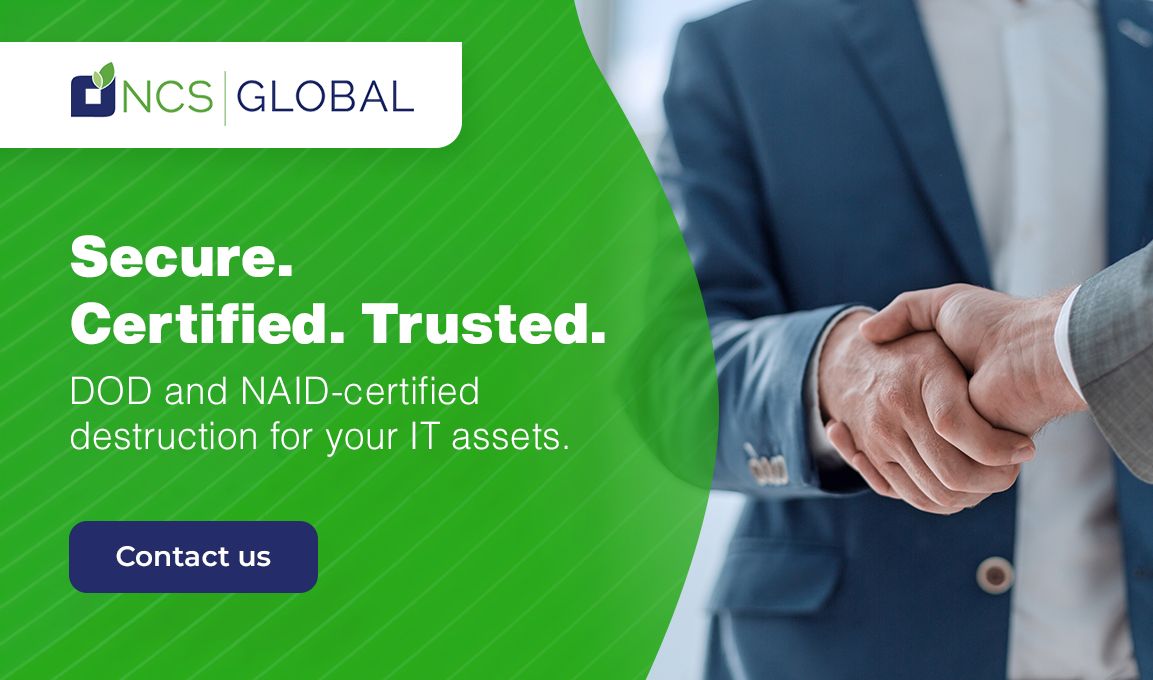Best Practices for Secure IT Asset Disposal: Protecting Your Data and the Environment

Secure IT asset disposal refers to a formal process for safely and responsibly disposing of electronic devices such as computers, servers, printers, and hard drives. Whenever an organization disposes of old computers or electronic storage media, it risks leaving behind sensitive information, including financial details, login credentials, and confidential customer information. Secure IT asset disposal provides a means of systematically and permanently destroying the data contained on those devices, preventing data breaches and ensuring compliance with data protection regulations such as GDPR, HIPAA, CCPA, and others.

Secure IT asset disposal involves specialized tools and techniques that permanently destroy data, following strict standards for data security. Secure disposal may also include recycling or repurposing components in an environmentally friendly manner. For companies that prefer hard-drive shredding, this includes recycling the metals and plastics leftover from that process. More and more organizations, however, are opting for secure erasure using specialized software, a process that allows for the re-use of hard drives and other devices.
Why Secure IT Asset Disposal Matters
Many people are under the mistaken impression that the normal process of deleting a file will remove it from their computer’s hard drive. In fact, deleting a file using Windows Explorer or a Mac’s Finder app typically leaves that file intact. When the space occupied by the file is needed for other purposes, it may be overwritten. Until then, however, the data it contains is generally very easy to retrieve using widely available software tools.
When your company fails to securely destroy data, you run the risk that it will be accessed by unauthorized parties, who may use it for identity theft, financial fraud, and other cybercrimes. Even if it doesn’t fall into the hands of malicious actors, you’re still running the risk that your company could run afoul of regulators. That could mean fines and penalties, additional scrutiny, bad publicity, and legal problems.
Secure IT asset disposal also protects the environment. When companies dispose of electronic waste haphazardly, that can result in harmful chemicals leaching into the soil and water, causing contamination. That can result in fines, legal action, and serious reputational damage.
Secure IT asset disposal, performed by a reputable IT asset disposition (ITAD) company, ensures that any sensitive or confidential data is irreversibly destroyed, while also protecting against environmental harm. By planning ahead and working with the right ITAD partner, you can protect your company against legal action, compliance failures, and bad publicity.

Planning for Disposal
Secure IT asset disposal starts with a comprehensive inventory of your organization’s IT assets, including hardware, software, and network resources. Obviously, this includes things like laptops, desktop workstations, and servers; but it should also include printers, copiers, network switches, and other devices that could potentially retain sensitive information. Many printer/copiers, for example, contain hard drives or other storage media that hackers could use to glean the information necessary for gaining access to your network.
Your inventory should include an up-to-date record of each item’s specifications, location, and user assignment. Regular audits and automated inventory tools can streamline this process and increase its accuracy, providing you with real-time visibility into your organization’s IT landscape.
Identifying assets that contain sensitive data is a critical step in safeguarding an organization’s information. Determine which hardware and software assets store, process, or transmit sensitive information such as personal data, financial records, or proprietary business information. Tools and techniques like data discovery software, manual audits, and interviews with key personnel can help you with this process. Next, prioritize the assets that should be subject to enhanced security measures, including encryption, access controls, and continuous monitoring. Regular reviews and updates to your inventory ensure that all sensitive data remains properly protected as your IT environment evolves.
Methods of Secure Disposal
There are a number of different ways to destroy the data stored on your unwanted IT devices. Data wiping, also known as secure erasure, uses advanced algorithms and randomized patterns to overwrite existing data, making it impossible to recover the original information. Tools like EcoErase provide essential protection for organizations aiming to protect their confidential information and maintain compliance with data privacy regulations.
Another option is physical destruction of storage media, including hard shredding. This involves mechanically cutting storage devices into tiny pieces, rendering data recoverable absolutely impossible. The leftover fragments are then recycled, preventing damage to the environment.
Degaussing is a third option. It uses powerful magnetic fields to destroy hard drives or tapes, effectively erasing the data stored on them. However, degaussing is expensive and requires more specialized equipment, so it is less common than the first two options above.
Environmental sustainability is a critical consideration for companies that are disposing of unwanted IT assets. Best practices dictate that materials should be repurposed or recycled to the greatest extent possible. Reputable ITAD companies will recover valuable materials like metals, plastics, and even spare parts, reducing the need for new raw materials and minimizing any negative impact on our environment. The best ITAD companies repurpose hardware by refurbishing and reselling it after the data destruction process has been completed. This extends the lifecycle of such devices, reducing the overall amount of e-waste generated.
Choosing the Right Disposal Partner
When selecting an ITAD provider, look for several key criteria that will ensure data security, environmental responsibility, and compliance with all applicable regulations.
First and foremost, look for a reputable company that has been in business for an extended period of time. Find out what their customers say about them, and what kind of customer service they offer. Do they provide dedicated account reps for each customer, for example, or are they uninterested in providing personalized service? Can they operate in multiple jurisdictions, serving geographically distributed organizations? How flexible are they in designing customized services to meet each client’s unique needs?
Certifications are critically important in the ITAD industry. Look for organizations certified by e-Stewards and NAID (National Association for Information Destruction), and which adhere to key ISO standards. These signify that the ITAD provider adheres adherence to the highest industry standards for data destruction and environmental responsibility.
Conclusion
Proper disposal of IT assets is crucial to maintaining data security and protecting sensitive information. Ensure that all data is thoroughly erased or destroyed to prevent unauthorized access, following industry standards and regulations for data destruction, and using certified disposal services. Maintain a well-documented chain of custody and ask for certificates of destruction to certify that your IT assets were handled using best practices for secure IT asset disposal.
Prioritizing secure IT asset disposal as part of your overall asset lifecycle management process is essential for safeguarding your organization against data breaches, ensuring compliance, and preventing legal repercussions. By following secure disposal practices, you protect not only your sensitive data but also your reputation and customer trust. Investing in secure disposal methods today can save your organization from significant financial and legal troubles in the future.
Want to learn more? Talk to one of the experts at NCS Global to learn how we can help you meet the highest standards of excellence in secure IT asset disposal.
